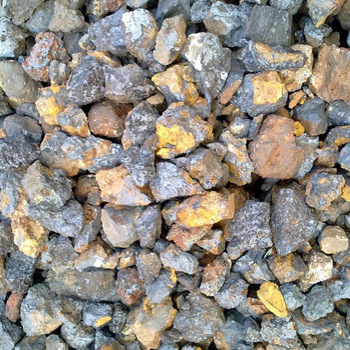
Manganese is a silvery-gray metal resembling iron. It is hard and very brittle, difficult to fuse, but easy to oxidize. Manganese metal and its common ions are paramagnetic. The most important manganese ore is pyrolusite (MnO2). Other economically important manganese ores usually show a close spatial relation to the iron ores.
Manganese Applications
Manganese has no satisfactory substitute in its major applications, which are related to metallurgical alloy use.
- Manganese is essential to iron and steel production by virtue of its sulfur-fixing, deoxidizing, and alloying properties.
Steelmaking, including its iron making component, has accounted for most manganese demand, presently in the range of eighty-five percent to ninety percent (85% to 90%) of the total demand.
Among a variety of other uses, manganese is a key component of low-cost stainless steel formulations. Small amounts of manganese improve the workability of steel at high temperatures, because it forms a high melting sulfide and therefore prevents the formation of a liquid iron sulfide at the grain boundaries.
- The second large application for manganese is as alloying agent for aluminium. Aluminium with a manganese content of roughly one point five percent (1.5%) has an increased resistance against corrosion due to the formation of grains absorbing impurities which would lead to galvanic corrosion.
- Manganese is used as an additive in unleaded gasoline to boost octane rating and reduce engine knocking.
- Manganese oxide was used in the original type of dry cell battery as an electron acceptor from zinc, and is the blackish material found when opening carbon–zinc type flashlight cells.
- Manganese compounds have been used as pigments and for the coloring of ceramics and glass.
Demand for manganese is primarily driven by the steel industry which consumes ninety-four percent (94%) of the Manganese ore produced. Demand for steel is ever increasing due to increased rate of infrastructure growth in developing nations such as China and India.
The manganese market is highly concentrated with limited global suppliers providing a natural pricing floor for manganese. Rising global crude steel production is driving up demand for manganese ore, especially reserves of high grade ore. China’s reported manganese reserves are limited and expected to last for less than fifteen (15) years at current production rates.
Demand for imported manganese ore in China has more than doubled in the last decade and now accounts for sixty-two percent (62%) of ore supplied into China.
Mid-term pricing prospects for medium to high grade manganese ores should remain very favourable, being mainly the result of:
1. Increased consumption of steel in developing world.
2. Market for steel products to increase.
3. Higher grade ores attract a premium price due to its value-in-use during steel making progresses.
Manganese is an essential industrial metal used as an additive in a wide range of steels, non-ferrous alloys, and electronic components, as well as in specialty chemical applications.
In the steel manufacturing process, the addition of manganese removes impurities such as sulfur and oxygen. It also optimizes the physical properties of the steel by improving its strength, hardness, and abrasion resistance.
Of the roughly fifteen million (15,000,000) metric tons of manganese produced (metal content), roughly eighty-nine percent (89%) is upgraded into alloyed manganese and foundry products. High, medium, and low carbon ferromanganese along with silicomanganese fall into this category.
The remaining eleven percent (11%) of manganese ore is consumed in the production of metallurgical and chemical products, including electrolytic manganese metal (EMM), electrolytic manganese dioxide (EMD), lithium manganese oxide, manganesesulfate, and other chemicals.
The EMM market is highly concentrated with over nine-seven percent (97%) of global electrolytic manganese metal (EMM) production sourced from China in 2010. South Africa, the only other electrolytic manganese metal (EMM) producing country, accounted for the remaining two point one percent (2.1%) of global supply.
Rapid growth in Chinese electrolytic manganese metal (EMM) capacity tied to robust demand fundamentals and lenient government regulation has crowded out producers in the United States and Japan over the past two decades.























